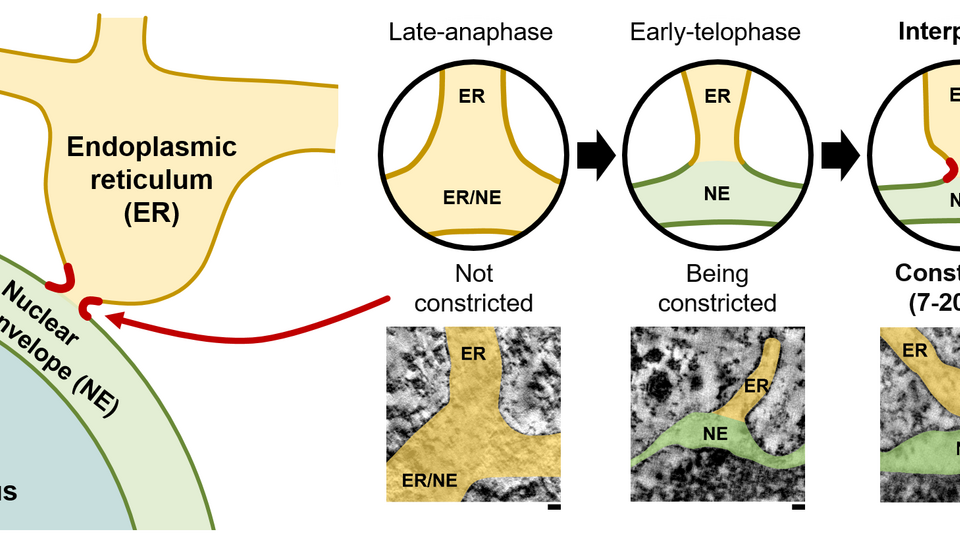


Membrane-bound organelles, such as the endoplasmic reticulum (ER) and the nucleus, compartmentalize biochemical processes in eukaryotic cells. To manage the distribution of proteins, the ER – which is the site of lipid and membrane protein synthesis – and the nuclear envelope (NE) – which surrounds the nucleus – are connected by membrane bridges. The sites where the ER membrane is fused with the NE are called ER-NE junctions. Shotaro Otsuka, group leader at the Perutz, explains: “Without junctions between the nucleus and ER, components such as membrane proteins, synthesized in the ER, cannot be supplied to the NE. However, we still do not know how these junctions are regulated; even their structure remained unclear before our study.” For the first time, the Otsuka lab was able to characterize the structure of ER-NE junctions in human cells.
ER-NE junctions, measuring only about 7–20 nanometers in width and being significantly less abundant, making their study inherently challenging. However, using quantitative three-dimensional electron microscopy, the Otsuka lab was able to investigate the morphology of these junctions. “Contrary to textbook knowledge, the ER-NE junctions differ to ER-ER junctions, as they are highly constricted”, Shotaro says. “Additionally, the junctions change morphology during the cell cycle. The constriction begins in the early phases of the cell cycle and matures to form fully specialized junctions by the end.” The proteins that stabilize this unique shape are, however, currently unknown and a future research focus.
The Otsuka lab identified two types of junctions: those with a lumen and those without. Helena Bragulat-Teixidor, first author and PhD student in the Otsuka lab, explains, “We speculate that junctions with a lumen may represent an open conformation. In contrast, junctions without a luminal connection are locked, and could prevent soluble proteins from entering or exiting the inter-membrane space between the ER and nuclear membranes.” These different structures suggest that the junctions may be able to regulate the exchange of components such as proteins and lipids.
Since the generation and stabilization of these junctions is energetically unfavorable, the Otsuka lab will continue to investigate the mechanisms by which they are maintained and regulated. Shotaro and Helena speculate that these junctions might function as a size-selective barrier, ensuring that only specific molecules are allowed to pass – like a guardian of the nucleus.
DOI: 10.1038/s44319-024-00175-w